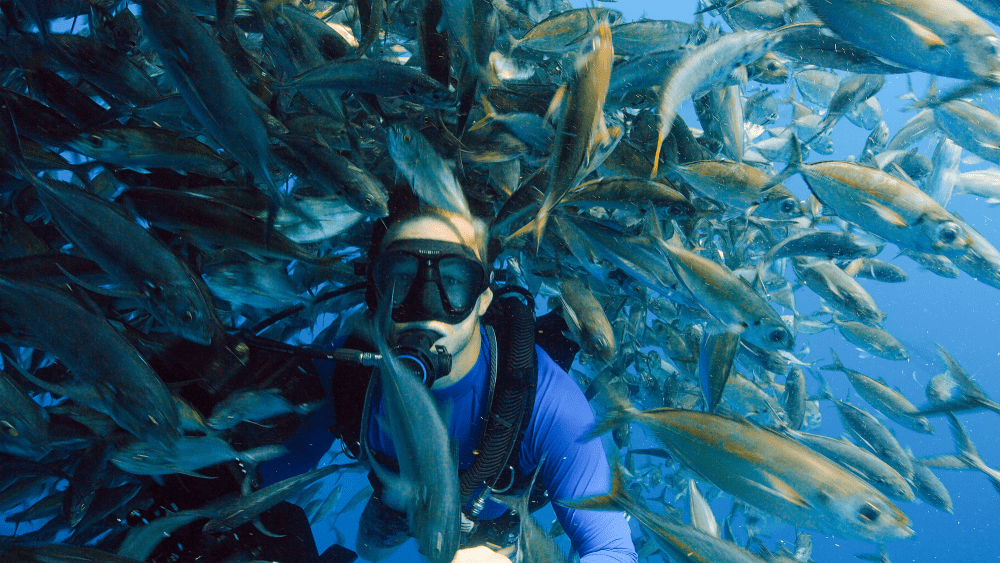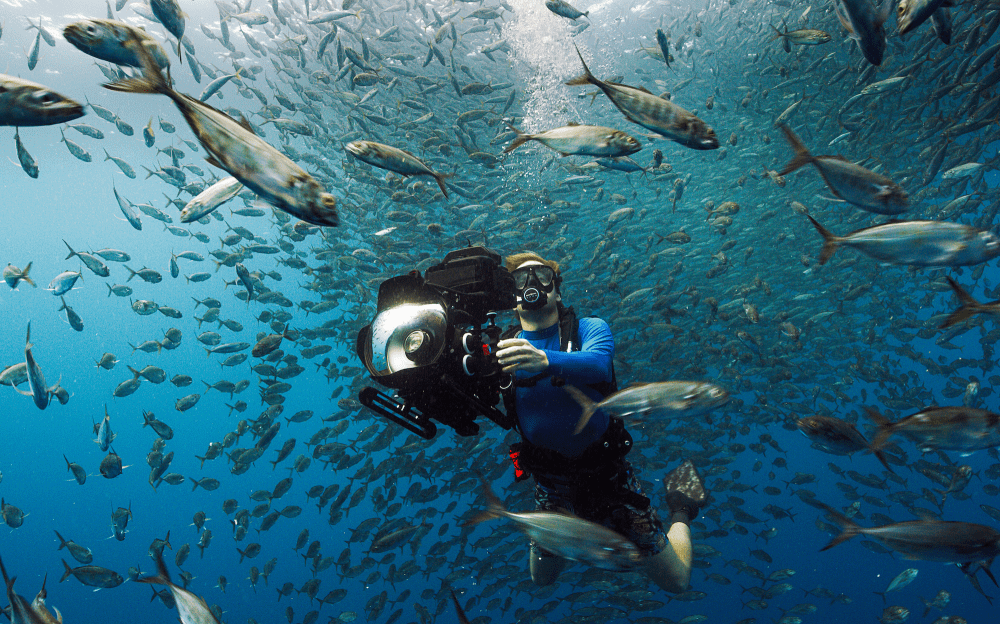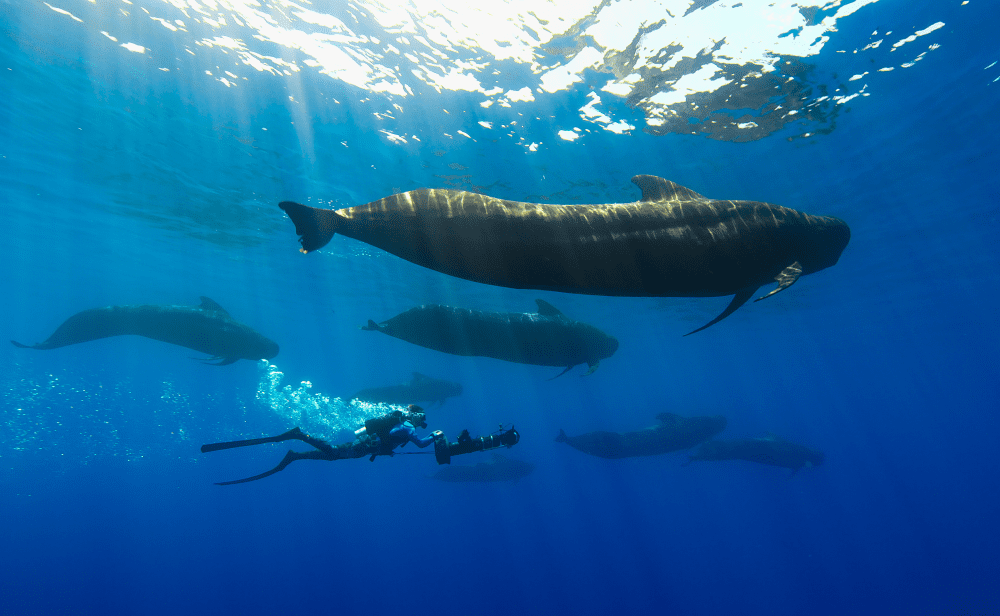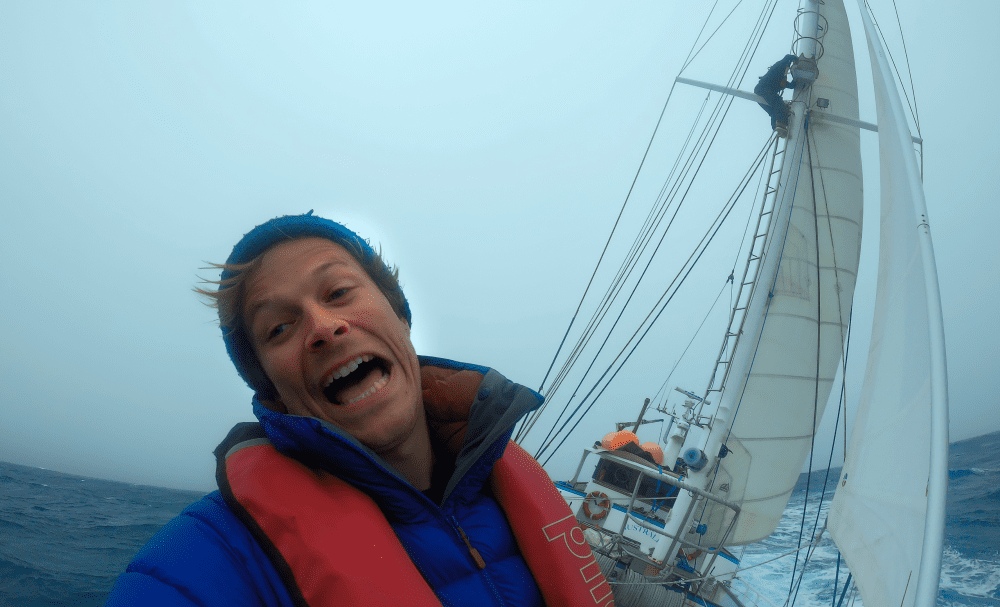Bertie Gregory’s honest depictions of the highs and lows of wildlife filmmaking made him a global hit on social media. Working with National Geographic, his approach brings viewers behind the lens to get a better idea of what it’s really like going out into the field to film some of Earth’s most amazing, and sometimes dangerous, wild animals.
“Epic” is probably a fitting word to describe his adventures, then, and you can follow along in his latest series, Epic Adventures With Bertie Gregory, which airs on Disney + from September 8. Ahead of its release, we caught up with Gregory to find out more about his experiences on the series, from finding his head in the mouth of a leopard seal to trying to film from inside a bait ball.
What can people expect from Epic Adventures With Bertie Gregory that they might not get from your average wildlife documentary?
We have gone for the biggest, most ambitious wildlife spectacles and events that are out there, which I’m sure you would expect from a normal wildlife documentary. But what makes Epic Adventures different is that paired with those incredible wildlife events is our crew’s adventure to find those animals and attempt to film them.
I think what that does is it helps to make the wildlife events more real. It also means that we can be quite funny sometimes, because we show you the things that go wrong. We’re definitely very, very far from being perfect and always slick.
I think also, and most importantly, because we’ve got people in the show, we can set the amazing wildlife events that we film within a bigger environmental context. So often, the threats that animals and wildlife face are sort of brushed over in wildlife documentaries. They can mislead the viewer into thinking that they’re in these wild, untouched places when the reality is wild places are in big trouble.
I should say that while it can all get very doom and gloom and depressing, we have worked with some amazing people already doing great things to save these animals and reverse these trends. A great example of that is in the Antarctic episode – definitely our most ambitious episode – we tried to film the biggest gathering of fin whales in Antarctica. Miraculously, we managed it. We doubled the world record, which was very exciting. We saw 300 whales, all together with thousands of penguins, and Albatross and seals all having this giant party.
What’s exciting about that, is that 50/60/70 years ago, even more recently than that, these gatherings didn’t happen because of commercial whaling in Antarctica. It hammered fin whale populations in the Southern Ocean down to about 2 percent of their original population. But, thanks to the ban on commercial whaling in the 70s, they’ve slowly started to make a comeback.
In one of your earlier Instagram videos, you’re getting handed starfish by Steller’s sea lions, and in this latest series I think we see your head in the mouth of a leopard seal. How does it compare working with animals on either end of the danger spectrum?
Yeah, so that that was an interesting one because they’re two very different encounters, but actually quite similar as well. So, a leopard seal is basically like diving with a dragon. The way that they move in the water, they look just like a dragon out of Game of Thrones. And when you first see it come out of the gloom towards you, it’s pretty terrifying.
It’s a big, intimidating predator with a massive head and loads of big teeth. They’re called a leopard seal for a reason. They’re really well armed and they are penguin-killing machines. And just like the Steller sea lions in the video that you mentioned, they don’t have hands. So, when they see something new and weird, they want to know what this new funky object is.
I think when you have these really close-up animal encounters, being a wildlife expert is really important. Because on the face of it, that’s very scary because they come flying at you. They don’t have hands; they use their teeth instead. And they start to put my camera and my head and my arms in their mouth, and they’re just trying to feel what you are.

POV: A friendly leopard seal wants to say hey. Image credit: National Geographic for Disney+
Now, knowing wildlife is important because if you didn’t know wildlife, you’d think you were being attacked and being eaten, and you would understandably be very scared. The animals totally reflect your body language. So, if you’re really nervous and tense, they get really nervous and tense. But I knew that if this leopard seal wanted to actually attack me, it would have hunted me like it does a penguin. It would have come out of nowhere, probably from behind, and it all would have been over very quickly. The fact that this leopard seal was moving slowly and calmly meant that this was not a predatory encounter.
That said, you need to read these animal’s body language and this massive female that we were interacting with, she was getting more and more brave, more and more confident, more and more excited. And that’s when reading their body language is really important, because it got to a point where she started blowing bubbles which is the beginning of a threat response. So, as soon as she did that, I looked at Dan, the person filming me, and we didn’t actually need to say anything to each other. We both got out and it was all good, and she went back to eating penguins.
I imagine sometimes it’s easier said than done, taking a breath to assess their behavior like that?
I mean, it’s almost like reading humans in a pub. You look around the room and there’s people that are smiling at you and really friendly. So, you know they’re the people that you can hang out with. And then there’s the guy in the corner that’s red faced and really angry. It’s all about just reading body language and going: “I’m gonna’ go and talk to them. I’m not going to go and talk to him.”
That’s got to be the first time anyone’s ever compared leopard seals to being a pub. Any other wild stories from filming?
Yeah, so, in the dolphin quest episode we were going to try and film a super-pod of spinner dolphins… They can be five- or even 10,000-strong, but we actually failed spectacularly. That’s what I love about this series. The adventure is to find these animals, so we can be honest if we fail, and I think it’s important to talk about. It’s easy to scroll through Instagram and just see people winning all the time.
And actually, in my opinion, what we found was more spectacular and more mind blowing than what we were going for, which is the way Mother Nature works… When you’re looking for animals at sea, birds are your friend. They are usually the sign that something bigger is underwater. So, we saw these birds coming down, I jumped in, and there was just this big ball. It was probably the size of a big car made up of mackerel, maybe six inches long. They were all turning in on themselves in a really tight ball.

Gregory inside the Mackerel bait ball. Image credit: National Geographic/Johnny Rogers for Disney+
There were also tuna the same size as me flying past at 50 miles an hour [80 kilometers per hour], hundreds of them in all directions and then the dolphins were getting involved. It was a massive feeding frenzy. Now at that point, some of the mackerel suddenly went: “huh, what’s that weird thing that’s not moving like a predator? I wonder if we can use that to hide around?”
So, this entire car-sized ball of fish suddenly just shape shifted and sucked all around me, and the fish were going in my swim shorts. They were stuffing into the monitor of the camera, the screen of the camera and just everywhere. It was just black, wriggling fish everywhere but I could still hear the tuna hitting the ball that I was in. And yeah, it was a bit scary.
So, I thought, well, the predators are going to be below me but not above me. If I just swim down, hopefully all of the action will push the prey off of me and they’ll get pinned at the surface and then the behaviour can keep going. So that’s exactly what I did. I punched my way down out of the bottom of this this ball of fish, and then look back up and the shot is in the film.
I guess that’s a day you wish you’d gone for wet suits over shorts.
Yeah, definitely

The constraints of filming underwater put the crew in fin’s reach of their subjects. Image credit: National Geographic for Disney+
Does winding up in the drama like that happen often?
Generally, as a documentarian, you’re trying to not influence what’s going on. The challenge with filming underwater is that when you’re on land, you can be 100 meters [328 feet] away and use a big, long zoom lens to get the viewer close. Whereas underwater, the maximum visibility you’re going to get is 30 meters, say 90 feet at best. That means that in order to get clear shots you need to be really close to the animals.
So, the animals generally know that you’re there and they need to be accepting of you in the environment, which is actually a really intimate way to be with animals. When an animal actually knows you’re there, and is going about its daily life, that’s really cool.
[In the same episode as the dolphins] we were filming pilot whales, which are actually a very big dolphin despite their name. And we were using underwater scooters – if you’ve seen Thunderball, the James Bond film with the underwater scooters, we were using those. It was very, very exciting – and as I was zooming alongside the pilot whales, they kind of accepted me as part of the environment. Then they all started to go to sleep in front of me, and if an animal is going to sleep that is like the ultimate honour. I just slowed right down and just hung out with them while they had a nap.

“If you’ve seen Thunderball, the James Bond film with the underwater scooters, we were using those. It was very, very exciting,” – Bertie Gregory on filming whales. Image credit: National Geographic for Disney+
What do you enjoy most about being a wildlife filmmaker?
I love spending time with animals and getting up close and personal with them, but on top of that, what I find really lucky about my job is that I get to work with loads of really incredible people. Whilst my name is in the title [of this series], there’s an enormous team of people both back in Bristol at Wildstar Films, which is the production company we’ve made this series with, but then also in the field, we work with incredible experts.
In Antarctica for example, to film the whales we were filming off of a 75 foot [23 meter] high sailboat with three boat crew. It was captained by an Australian called Ben Wallace, who’s been going to Antarctica longer than I’ve been alive, and he was always trying to push the limits of what is possible because he is just so comfortable.
In such an extreme environment where there’s 75 mph [120 km/h] winds, there’s icebergs scraping down the side of the boat at night, just crazy stuff happening. But he is just chill. That is just normal. When you’ve got someone like that to rely on, it just means your limit is so much bigger. So, that’s definitely a big highlight of it: the friendships that you make on these kinds of expeditions.

Gregory, calm and collected, on location. Image credit: National Geographic/Bertie Gregory for Disney+
What advice would you give to people who want to get into the competitive field of wildlife filmmaking, but aren’t quite sure where to start?
Firstly, that your knowledge of wildlife is so much more important than your knowledge of cameras. So, if you don’t have access to a camera that’s not actually a problem. That’s not a barrier initially, because you can be technically the best camera person in the world, but if you don’t know how to get close to animals without disturbing them, you’re useless. The best way to learn how to do that is through experience. Nothing beats spending time outside, trying to sneak up on animals.
So, I would say the first and foremost important thing is to spend every moment of your spare time outside, learning to sneak up on animals. Also, get to know wildlife experts. Reach out to them online, ask them for advice. You just need to be a giant sponge.
Once you’ve started doing that, if you don’t yet have access to a camera, it doesn’t have to be something amazing. It can even be on your phone. I get sent a bunch of videos every day from people wanting to get into wildlife film, and I’m always most impressed when someone’s made an incredible film on like an iPhone rather than a $20,000 camera setup because that is a far better demonstration of how good you are in terms of your field craft and your ability to get close to animals.
I think on the face of it, it’s really competitive, but I think, actually, if you want it really, really badly, you will rise above a lot of that competition. Because a lot of people say that they want to get into wildlife film, but actually when it comes down to it, you need to be the person that is you know willing to miss your best friend’s birthday… [You have to] go for it and be really single-minded towards it. Because it is competitive… but actually if you want it really bad and you want it more than the competition, you can get that for sure.
Epic Adventures With Bertie Gregory is available on Disney+ from September 8
Source Link: IFLScience Meets: Wildlife Filmmaker And National Geographic Explorer Bertie Gregory